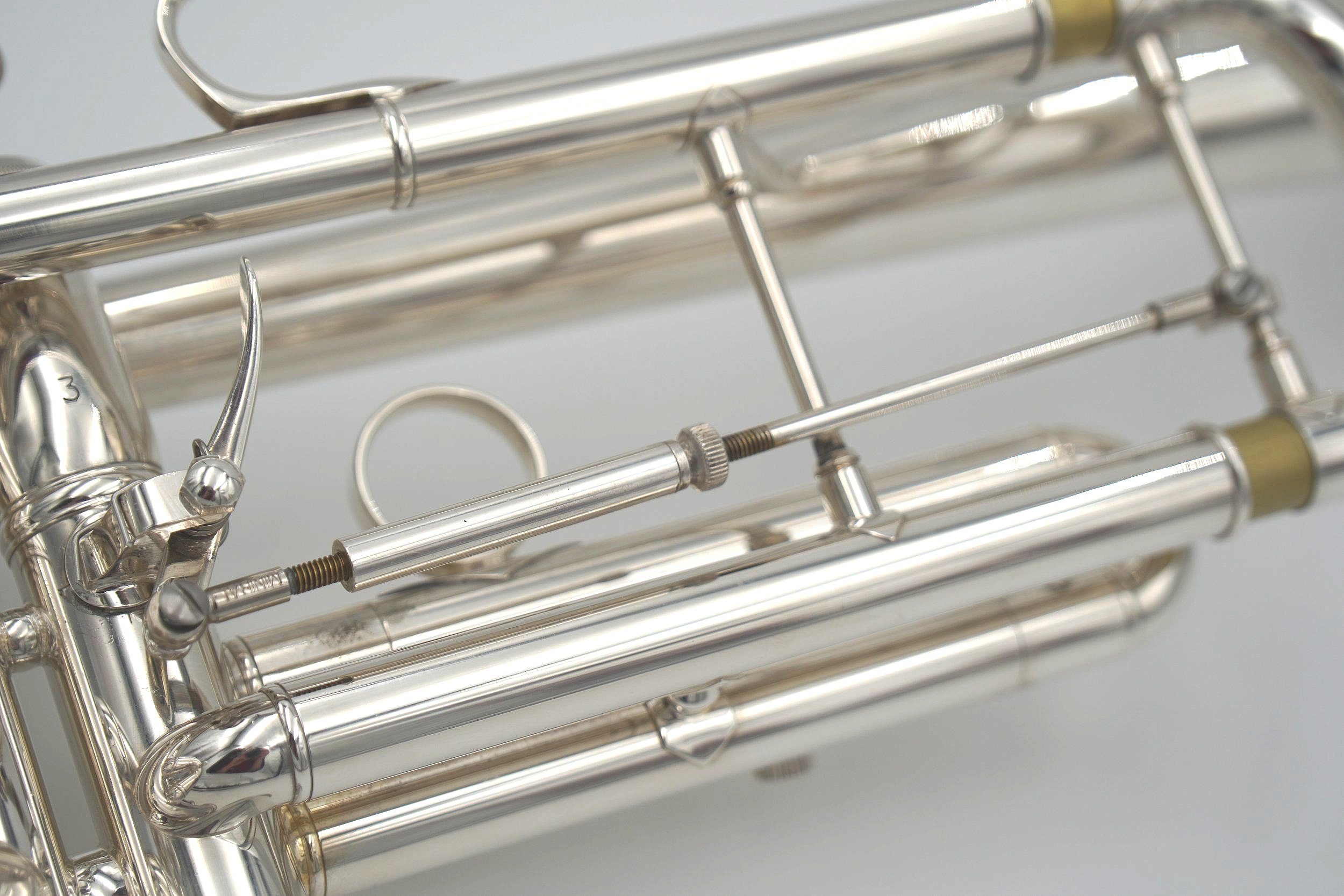
Vented Valves are one of my favorite trumpet modifications - I have them installed on most of my primary use trumpets. I love vented valves because they are simple, relatively affordable, and have several playing benefits.
What is a Vented Valve?
A vented valve is a modification to a trumpet valve piston that involves drilling a small hole where the third valve slide meets the piston in the “up” position, allowing air to pass freely from inside the valve slide out the bottom of the piston ONLY while the valve is not being pressed.
On a rotary trumpet, vented valves look a little bit different - like a small hole in the cylindrical rotor casing - which again allows movement of the slides without first depressing the valves.
Vented 1st Piston Valve
Vented rotary valve (see the small hole in between the slide legs?)
Why Vent your Valves?
Venting your piston valves allows for several playing benefits.
Precise or pre-emptive tuning adjustments WHILE playing
No “pop” or sudden pressure equalization when finally pressing down the valve after presetting the valve slide position (meaning you can preset low D, C#, low F, etc without having the pop disrupt your embouchure)
Prevents a Bach Stradivarius style dump slide from flying out when pulling 3rd slide in quickly
Works especially well on valve slides that are mobile only via triggers - triggers can be hard to activate exactly “in time” due to spring tension and again the vent allows you to preset the valve length
Considerations
Before venting your valves, here are some important caveats/considerations:
Don’t DIY: Best case scenario, you have a piston made with a vent originally. If you plan to have one installed after-market, it’s best to have a very high level repair-person do it for you, such as Charlie Melk, Osmun Music, Josh Landress, Mike Del Quadro, etc. If you have to explain what a vented valve is, go somewhere else. If your cutting tool isn't sharp enough you could dent the piston or peal the plating or void the warranty if you have one. Some offer venting from manufacturer, but not a standard feature since it is not requested that often. A little warping or roughness left on the surface could effectively ruin the third valve.
Prevent slide damage with slide stops: Venting your valves also means that your valve slides will - if greased well - always extend to the full length without you even pressing the corresponding valve, slides are much more likely to fall off of your trumpet due to gravity. Any valve that you vent should probably have a stop rod installed on the corresponding valve slide to prevent this. Otherwise, this can be addressed using a hair-tie or those Yamaha silicone elastics. If you forget about this - you WILL face consequences!
Playing one-handed: Similarly, if you’re playing right hand only (for page turns, plunger muting, and “wah-wah” effects) and your 3rd valve piston is vented, your 3rd slide will likely fully extend and make all of your 3rd valve fingerings unusable. You’ll definitely want a hair tie on hand to keep the slide in to prevent that!
3rd slide stop screw(s) preventing third slide from falling out
Hair tie used to prevent 3rd slide from falling while playing (like for one handed playing)
Another hair tie method to prevent both first and third slides from falling (usually how I store in the case)
How to Get Vented Valves
If you’re interested in getting vented valves, I recommend reaching out to one of the shops listed below.
Shops that have done vented valve work for me personally:
Charlie Melk’s Brass Works (Charlie Melk)
http://charliesbrassworks.com/
Osmun Music
https://osmun.com/repair-services/
Sweeney Brass
https://www.sweeneybrass.com/
Other shops that do excellent work but I haven’t personally had vented valves done at:
J. Landress Brass (Josh Landress)
https://www.jlandressbrass.com/services.htm
Del Quadro Custom Trumpets (Mike Del Quadro)
https://dqscustomshop.com/







